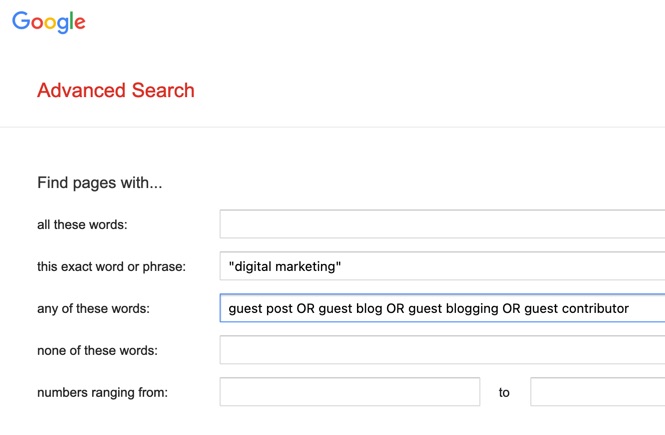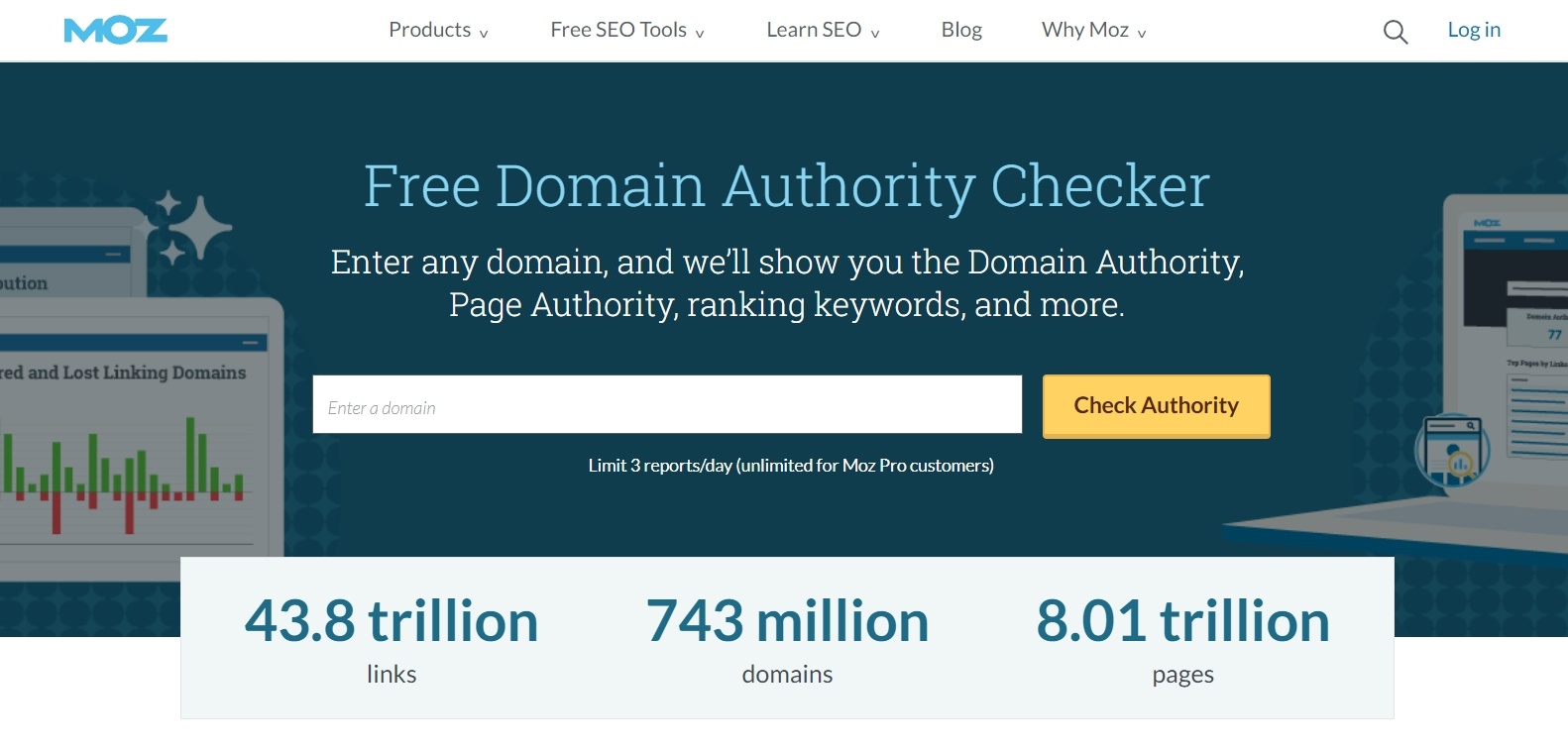Guest blogging is a powerful tool that:
- Puts you in front of new audiences
- Grows your authority
- Builds your online visibility.
But how do you approach it in the right way?
In this post, we explore the 4 key steps you need to make successful guest post submissions, so you know exactly how to have:
- Content published on other blogs
- Long-term relationships and potential ongoing collaboration as bonus benefits.
First, let’s identify what guest post blogging actually is…
What is Guest Post Blogging?
Guest post blogging involves creating a post for publication on another blog in order to reach a wider audience.
It's a way to share your expertise with audiences who may never otherwise come across you.
By doing so, you help build visibility and authority for your own brand, including attracting additional traffic both directly and indirectly via backlinks from your post and associated SEO benefits.
It works because it’s not just you that benefits! The blog that publishes your post wins too. They get fresh content and a new perspective that adds value for their readers.
Guest blogging is a powerful tool that puts you in front of new audiences, helping to grow your authority and build your online visibilityClick To Post OnSo now you know what it is, how do you actually approach it? Here are…
4 Key Steps to Make Successful Guest Post Submissions
1. Find Suitable Blogs
The very first step is to identify publications that may be willing to publish guest posts from you.
This can involve quite a bit of work in the beginning, but it pays off longer term with some blogs willing to publish regular content from you.
And once you’ve got a few guest posts under your belt, it gets easier to attract other blogs because you now have a track record!
That increases your credibility, while at the same time reducing the risk for them.
A: Be Clear on Your Niche and Audience
Start by ensuring you’re clear about the niche you serve (through your existing blog) and the audience that’s attracted to your content:
- What topics do you usually cover? For example, think about the content categories on your blog.
- Who are your readers? Use tools like Google Analytics to analyze your existing visitors, as well as social media analytics to discover who tends to resonate with your social posts.
With this information in hand, you can then target blogs that cover similar topics and target a similar audience.
Start by ensuring you’re clear about the niche you serve and the audience that’s attracted to your contentClick To Post OnB: Find Suitable Blogs Via Search Engines
Use search engines like Google to find blogs in your niche.
Use keywords related to your niche, alongside terms such as blog, guest post or write for us.
Try using Google’s advanced search. If you wrote content related to digital marketing, you might do a search similar to the following: 
Experiment with different searches and start compiling a spreadsheet of suitable blogs to investigate further.
C: Utilize Social Media Platforms
Similarly, social media can be a great tool for discovering guest blogging opportunities.
Follow influencers and thought leaders in your niche for insights into popular blogs within your niche, including blogs they have potentially guest posted on.
You can also join relevant groups or forums where bloggers and content creators share guest posting opportunities.
D: Explore Blogging Networks and Directories
There are various online platforms and directories that list blogs that accept guest post submissions, such as:
While potentially useful, just be aware that the information such sites make available can rapidly become out of date.
So don’t rely on the info they provide but use it instead as the basis for your own further research.
E. Investigate Competitor Backlinks
The likelihood is that you have competitors in your niche who use guest blogging as a strategy too.
So find out which blogs they are publishing on, and uncover guest posting opportunities for your own content.
To do so, try using backlink analysis tools like Moz's Link Explorer and Ahrefs to get a list of a website’s backlinks, and then investigate further from there.

To help identify links from guest posts, look for link phrases such as author, guest post by, and similar.
Investigate competitor backlinks to identify blogs they have guest posted on, potentially revealing opportunities for your own guest postsClick To Post OnF: Assess the Blog’s Audience Engagement
Once you’ve found some potential blogs, evaluate the level of audience engagement with the content they publish.
After all, a blog with an active and engaged audience will likely increase the value you receive from any post you publish with them, including:
- Sharing it on social media
- Leaving helpful comments that can help increase its visibility on search engines
- Linking to it from other content
So look for metrics such as:
- Comments (including comment quality)
- Shares on social media
- Incoming links to posts from elsewhere.
G: Review the Blog’s Content Quality, Authority and Relevance
Read the blog’s existing content to ensure it aligns with your own quality standards.
If it’s a poor quality neighborhood with ‘filler’ type content that offers little actual value to readers, it can potentially do more harm than good to your online visibility.
Use tools like Moz’s FREE Domain Authority Checker to gauge the credibility and SEO strength of the blog. Higher authority often correlates with quality and audience trust.

And of course ensure the blog publishes content that would be relevant and of interest to your own audience. That’s a good indication that your own content would be of interest to their own audience.
2. Prepare and Send Your Guest Post Pitch
Now that you’ve done your research and have a list of suitable blogs—even if it’s just a handful—it’s time to think about reaching out to them.
But before doing so, invest time in both understanding each of the blogs you're targeting and determining an idea to pitch to them.
Analyze Other Guest Post Submissions
Analyze their existing content to assess the following:
- Who is their primary audience?
- What content do they usually publish?
- Who already publishes on the blog as a guest blogger? What’s their typical profile? For example, do they tend to be industry professionals, fellow bloggers, or entrepreneurs? Understanding this can shape how you present your proposal.
- Which topics have attracted higher-than-average levels of engagement such as comments and shares?
- What is the tone of some of their more successful guest posts?
- What length of post do they typically publish?
- How visual are typical posts? For example, do posts tend to have lots of images? Or few and far between?
This all helps you to understand more about the blog, what they’re looking for, and what the blog’s audience seem to best engage with.
And doing this type of in-depth research can help you create a more successful guest post pitch that’s personalized to the blog in question, increasing the likelihood of response.
Select the Perfect Topic
Your topic selection is very important. Aim for something that:
- Aligns with themes on the blog that have previously proved popular.
- Adds a fresh perspective or new insights, thereby adding value to their audience.
Using tools like BuzzSumo can help you to choose a topic that resonates with their audience.
Craft a compelling pitch that clearly outlines the value your guest post will bring to the host blog's audienceClick To Post OnAdd Value to the Blog Before Pitching
Before you pitch an idea, become an active member of the blog's community by:
- Commenting on recent posts and engaging in discussions, both on the blog and on social media
- Sharing posts on social media, tagging the blog owner to get noticed.
This establishes a relationship with the blog owner, and makes it more likely that your pitch will be successful because they already have some familiarity with you and will recognize your name.
It’s important to understand that many blogs will receive anywhere from a handful to dozens of guest post submission pitches a day.
However, the majority will be poorly constructed and written in a cookie cutter type format.
Anything you do that helps your own pitch rise above the pack and attract positive attention will help lead to a successful outcome.
Is There an Ideal Time to Pitch Your Guest Post?
Just as there can be optimal times of day to post on social media for your audience, there are optimal times for pitching your guest post submission.
Research suggests that:
- The best time to pitch a guest blog is during the blog owner's work hours (9-5) in their own time zone
- Tuesdays and Wednesdays can attract the highest response rates in general.
But it’s not just about times of day. It’s also about spotting opportunities for when a blog may be far more receptive to your pitch, such as:
- If the blog has recently featured or talked about your business or products
- If the blog makes a specific announcement to seek guest contributors
- When a recent guest post on the blog suggests they may be interested in your own potential topic, perhaps as a follow-up contribution
- When the blog mentions you or your work on social media, giving you an open door to start discussing a potential contribution of your content.
So how should you approach putting your pitch together? Let’s take a look…
4 Essentials for a Winning Guest Post Pitch
When formulating a pitch for a guest post submission, there are four key steps you should always follow to increase your chances of success…
A. Introduce Yourself Appropriately
Consider who the blog typically features as guest bloggers.
Try to formulate a short introduction that highlights aspects of your background and blogging experience that means you fit a similar mold, thereby catching their attention and matching what they’re potentially looking for.
But keep it short and snappy—remember they’re busy and need to quickly ascertain suitability. Long-winded paragraphs won’t cut it.
B. Understand Any Blog’s Submission Guidelines
If available, familiarize yourself with any guest posting rules or guidelines that the blog makes available.
Refer (and adhere!) to them in your pitch, so they know you’ve done your research and are willing to work with them and make their lives easier.
For example:
- Do they prefer a full draft submission or just an idea pitch?
- What format should your submission be in?
- Are there specific requirements for a WordPress submission?
C. Personalize Your Pitch Email
One of the most important aspects of your pitch is the personal touch.
Avoid generic salutations like Dear Sir/Madam or Hi there, or any other indication that you’ve not done your research or are simply sending out blanket emails.
To start with, take the time to find out the name of the blog owner or the editor.
This information is often on the About page or their social media profiles. Addressing them by name is the first step in showing that you've done your homework and respect their platform.
Refer to their blog in the same way that they usually refer to it. If it’s unclear, you can usually find this out by signing up to their newsletter or email list.
D. Make It Clear Why You’re a Great Fit
In your pitch, make a strong case for why you would be a good fit for their blog.
Take advantage of all the research you’ve done about their blog, their content and their audience, and look for ways that you can:
- Make yourself relevant to them
- Add value to their audience.
Remember, it’s not about you, but about what you can do for them. In scanning your pitch, they’ll always be thinking, “What’s In It For Me?”
Make it obvious.
Build credibility and authority by:
- Including links to previous posts (including any guest posts), particularly any with high levels of engagement
- Linking to your social profiles, where you have reasonable follower counts and engagement levels
- Any other information that helps to indicate the type of value and engagement you can bring to their audience.
Make it clear you’re primarily interested in being of service to them and providing maximum value to help grow their success.
3. Create an Outstanding Guest Post
Of course, once your pitch is accepted, you still need to create a post they’ll be happy to publish, and with the minimum amount of fuss.
In addition, by making a good impression, you may well have opportunities to guest post for them again in future.
Aim to exceed your usual standards, especially if it's your first post for a new site, and simply offer as much value as you can to their readership, while sticking within their guidelines and any other requirements they may have given you.
Your goal is to impress both the blog owner and their audience so that they come back and ask for further contributions.
Create an Engaging Headline
Revisit your headline. It might have worked in your pitch as a draft idea, but consider tweaking it to ensure maximum impact.
Effective headlines often:
- Clearly state the benefit to the reader
- Use strong, actionable words
- Evoke an emotional response
Remember, a captivating headline sets the tone for your entire post.
Use Smart Linking
A well-linked post can enhance its SEO success and value. Include:
- Links to relevant content on the host site.
- External links to authoritative sources.
Follow the host site’s linking guidelines carefully. A mix of internal and external links not only supports your points but also boosts the post’s SEO profile.
They may also be willing for you to link back to your own content from within the post itself. If so, be respectful and mix it up with types of links.
Add Relevant Images
If the host site doesn't have a preference for sourcing images, include or suggest appropriate images for your guest post so that publishing your content is as easy as possible for them.
Images you supply should complement and reinforce your content, as well as make it more reader-friendly by breaking up long stretches of text.
Include Your Keywords
Like you do for your own blog, do keyword research for your guest post submissions to uncover relevant phrases that can help optimize your content for search engines and increase readership, which benefits both you and the host site.
Format to Fit Their Style
If not otherwise referred to in their guidelines, pay attention to the length of posts they typically publish and how they tend to be formatted.
Note their style regarding subheadings, bullet points, and text formatting like bold or italicized words so that your content fits in as closely as possible with the minimum of editing required.
Create an Effective Guest Bio
When publishing a guest post, part of the deal is nearly always that your bio is published at the end of your post (or otherwise adjacent to it), giving you some publicity in return for providing the blog with your content.
This is normally the only place you’ll be permitted to do any kind of self-promotion, including by providing links to your website or other personal platforms.
Make it as evergreen as possible as it’s unlikely you’ll be able to edit it later. For lasting benefits, refer to:
- Your own blog where interested readers can find more of your content or otherwise connect with you
- How you add value to the world that readers might be interested in hearing about.
Keep it brief, be respectful to the host blog, and make it clear how the reader stands to benefit by clicking through to your blog or wherever else you link to.
4. After Publication, Promote the Post
Once published, help the host blog get it out to the world.
In doing so, you not only boost your own authority and credibility by having your content published elsewhere, you also add value to the host blog and make it more likely they’ll want to work with you again in the future.
At a bare minimum:
- Engage with comments left on your post in a timely manner, responding appropriately and professionally
- Promote the post via your own audiences on email, social media, and other channels
In addition, you might like to link to the post from some of your own blog’s content. If you do so, let the host blog know so they can see you’re committed to their ongoing success, and helping to build your relationship with them.
Presuming their experience with your guest post submission has been positive, ask them about ongoing, regular contributions and what kind of schedule would work best for them.
Stick to any commitments, maintain the same level of quality and cooperation, and continue to aim to add as much value as you can for their audience.
Frequently Asked Questions
What is guest post blogging?
Guest post blogging involves creating a post for publication on another blog to reach a wider audience.
How can I find suitable blogs for guest post submissions?
Utilize search engines, social media platforms, blogging networks/directories, competitor backlinks, and assess audience engagement to find potential blogs.
What are the essential steps for a winning guest post pitch?
Introduce yourself appropriately, understand submission guidelines, personalize your pitch email, and clearly explain why you are a great fit for the blog.
How should I create an outstanding guest post?
Craft an engaging headline, use smart linking, include relevant images, add keywords, format to fit the blog's style, and create an effective guest bio.
What should I do after a guest post is published?
Engage with comments promptly, promote the post via social media/email, link back from your blog, inquire about future contributions, and maintain quality and cooperation.
To Conclude
As we’ve seen, the key to successful guest post submissions lies in firstly finding and connecting with suitable blogs who have a similar audience to your own and who have guest posting opportunities; and secondly, in providing as much value as possible by providing them with engaging, relevant content that you then help them to promote.
In doing so, you take advantage of a powerful tool that helps expand your reach, grow your authority and increase your online visibility, putting you in front of audiences who may otherwise never hear about you, and building relationships with other businesses that you can continue to collaborate with in future.



